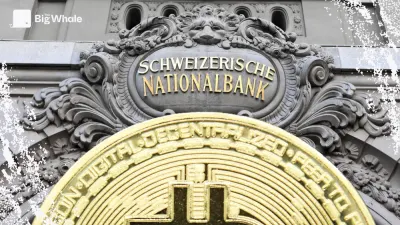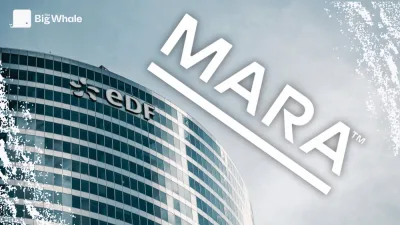TBW - Berachain (BERA): What is this new blockchain worth?

Introduction
Berachain is a Layer 1 blockchain equivalent to EVM, replicating Ethereum's environment to make it easier to deploy applications. This compatibility attracts Solidity developers while offering them access to the same tools as Ethereum.
Berachain's special feature is its new consensus, the Proof of Liquidity, which works with three tokens:
- BERA: The token used to pay transaction fees (gas)
- BGT: A non-transferable governance token, obtained by providing liquidity. It can be staked on validators or exchanged for BERA in a 1:1 ratio
- HONEY: The blockchain's native stablecoin
By separating the governance token from the transaction token, Berachain prevents a "whale" from exerting undue influence on governance. As the $BGT cannot be transferred, only active participation in the network allows you to have a say in governance.
Financing
The Berachain story began at the end of 2021 with the NFT "Bong Bears" collection, created by anonymous developers such as @SmokeyTheBera and @itsdevbear. This collection has managed to unite a strong community around the project.
.png)
In 2023, the team reached a major milestone by announcing the creation of the Berachain project. They manage to raise $142 million from major investors, including Polychain Capital, with an initial valuation reaching $420 million.
Functioning of "Proof-of-Liquidity"
Berachain's Proof-of-Liquidity (PoL) is an alternative to Proof-of-Stake (PoS) that solves a key problem of today's blockchains: tying up liquidity to secure the network.
In a traditional PoS system, validators must stake (lock) native tokens to secure the blockchain. This creates a conflict of interest between network security and the use of funds in decentralised finance (DeFi), as the staked tokens are not available for use in financial applications (loans, DEX, etc.).
Liquid Staking Tokens (LSTs), such as those proposed by Lido (stETH), offer a partial solution by representing the staked tokens in a liquid form that can be used in DeFi. But these LSTs pose security risks because they are derivatives of the original tokens and can introduce problems such as liquidity imbalances or economic attacks.Berachain proposes a model where the liquidity of DeFi becomes a central element of network security, rather than a limiting factor.Here's how it works:
- Validators must store BERA (the native token) to be able to validate blocks.
- In return, they receive BGT tokens (governance token), which they do not keep but redistribute in a specific vault to different DeFi protocols.
- Users are encouraged to deposit cash into these protocols to recover LP tokens (which represent their participation).
- LP tokens can be staked in the Vault in exchange for BGT rewards, which can then be re-staked at validators to improve network security or exchanged for BERA for use in DeFi.
- DeFi protocols can also influence the distribution of BGTs, by encouraging validators to inject rewards into their own Vault, which pushes users to deposit on their platform as a priority.
Why is this innovative?
Berachain aligns the interests between security and DeFi: instead of having funds tied up to secure the blockchain, security relies on the economic activity of the ecosystem.
DeFi protocols can directly influence the distribution of BGTs to attract liquidity, creating a dynamic and competitive ecosystem.
Users benefit from both returns on DeFi and staking, making the ecosystem more attractive to investors.
To put it simply, Proof-of-Liquidity turns liquidity into a security engine, rather than locking it into passive staking.

Risks associated with Proof-of-Liquidity
Berachain's Proof-of-Liquidity (PoL) introduces an innovative dynamic that could solve some of the problems of traditional Proof-of-Stake, but it also carries specific risks, particularly in terms of protocol security and economic stability.
One of the major risks concerns the centralisation of the validators' power. In this system, validators have an incentive to distribute BGTs in certain protocols to attract liquidity. This could lead to a concentration of power between a few validators with a strong ability to attract liquidity, which would reduce the decentralisation of the network. If a small group of validators control too large a share of the network, they could manipulate the consensus, exposing Berachain to risks such as the formation of a validator cartel.
PoL also relies on Liquid Staking Tokens (LP Tokens), which are representations of liquidity pool shares. If a smart contract in a major DeFi protocol used by Berachain has a flaw and is exploited, the security of the network could be compromised. An attack similar to the one suffered by Curve Finance could weaken network liquidity and affect Berachain's consensus.
Beyond the technical risks, economic and liquidity problems could also emerge. Unlike traditional PoS, where staked tokens are locked and protect against mass sales, PoL relies on liquid assets. In the event of a crisis of confidence, a massive sale of LP tokens could lead to a liquidation spiral, impacting both DeFi and network security. If a dominant DeFi protocol on Berachain collapses, the drop in value of LP tokens could reduce the ability of validators to secure the blockchain.
What needs to be understood is that Berachain's Proof-of-Liquidity provides a major innovation by integrating DeFi into the security of the network, but it does not remove the risks, it simply transfers them to new points of vulnerability. In terms of benefits, this model optimises the use of liquidity, aligns incentives between security and DeFi, and is more attractive to investors and users. However, it has potential flaws: centralisation of validators, vault manipulation, over-reliance on DeFi protocols and vulnerability to liquidity crises and hacks.
The BeaconKit framework that borrows from Cosmos
The Berachain project aims to develop a new ecosystem thanks to the "BeaconKit", a framework for using the CometBFT consensus algorithm in EVM execution environments. This architecture combines the advantages of Cosmos consensus with full EVM compatibility, known as "identical", enabling the creation of hybrid Cosmos-Ethereum blockchains.
This framework, which is compatible with Layer 1 and Layer 2, offers transaction finality in a single slot, compared with 64 on Ethereum. This reduces the finality time from 13 minutes to 12 seconds. Finality represents the point at which a transaction becomes definitively validated and irreversible, so faster finality strengthens transaction security.
In addition, these chains are fully EIP (Ethereum Improvement Proposal) compatible thanks to their identical EVM compatibility, allowing them to evolve in parallel with Ethereum.
BeaconKit aims to realise Cosmos' initial vision of a vast ecosystem of interconnected blockchains. Where Cosmos has struggled, not least because the best web3 developers and tools favour the EVM environment, Berachain offers a solution that makes it easy to deploy a blockchain using the Cosmos consensus while maintaining identical EVM compatibility.
IBC (Inter Blockchain Communication) integration is planned, which will enable blockchains built on BeaconKit to interact with the Cosmos ecosystem.

A strong meme culture
The biggest challenge for a blockchain is creating a community. Drawing on their experience in NFTs, Berachain's founders have skilfully integrated meme culture into their communication to create a unique universe and a strong, recognisable community.
This memetic approach, combined with innovative concepts such as PoL and the BeaconKit, makes Berachain one of the most eagerly awaited projects of 2025.
Even before the mainnet went live, it was already possible to use Boyco Market, a Berachain version of Royco, a marketplace that aligns incentives and generates returns.
Boyco Market currently has 3 billion in total stranded value (TVL), which would put Berachain at 6ᵉ in terms of TVL among all blockchains. Even if this activity is boosted by a potential airdrop, these figures demonstrate investor enthusiasm for this new player in the ecosystem.
.png)
Tokenomics
The Berachain mainnet was implemented on 6 February 2025, along with the BERA token. Here's its breakdown:
- Core contributors 16.8%: Advisors and members of Big Bera Labs.
- Investors 34.3%: Series Seed, A and B investors.
- Airdrop 15.8%: To reward testnet users, Berachain NFT holders, social network participants, etc.
- Future Community Initiatives 13.1%: To encourage developers, applications and users to use the network over the long term.
- Ecosystem and R&D (Research and Development) 20%: To finance the development of the ecosystem, research and the expenses of the Berachain foundation.
In the end, the project's tokenomics turn out to be very similar to those of other VC coins, with wide distribution to venture capital teams and funds. One might even suggest that the three-token system serves primarily to conceal this reality.

According to the acquisition schedule, tokens from investors, Berachain contributors and the Community Initiatives budget are locked for one year. After this period, they will be released progressively over a period of 2 years.
During the first year, only 25.3% of the tokens will be in circulation, comprising half of the "ecosystem & R&D" budget and the entire Airdrop.

The Big Whale's opinion
Berachain is positioning itself as an innovative Layer 1 blockchain by combining EVM compatibility, optimised governance and a business model based on Proof-of-Liquidity. This approach aligns the incentives between network security and DeFi activity, avoiding the immobilisation of liquidity as in a traditional Proof-of-Stake system. The project relies on a strong community, developed since the NFT Bong Bears collection, and has succeeded in raising substantial funds from prestigious investors, confirming the market's interest in its approach.
The BeaconKit framework adds a further layer of differentiation by combining the CometBFT consensus (derived from Cosmos) with identical EVM compatibility, speeding up the finality of transactions and facilitating interoperability with other blockchains. This technical advantage could enable Berachain to attract new projects looking to exploit the advantages of Cosmos without abandoning the Ethereum ecosystem.
However, despite these advances, the PoL model introduces new risks. By shifting security from the network to DeFi, Berachain becomes more vulnerable to liquidity crises and economic attacks on LP tokens. The centralisation of validators, manipulation of vaults and over-reliance on DeFi protocols are points to watch out for.
Despite an effective marketing strategy, thanks in particular to the use of memes and community culture, Berachain's success will depend on its long-term adoption and its ability to maintain a liquid, secure and attractive ecosystem for users.
Finally, tokenomics are not very community-friendly.



